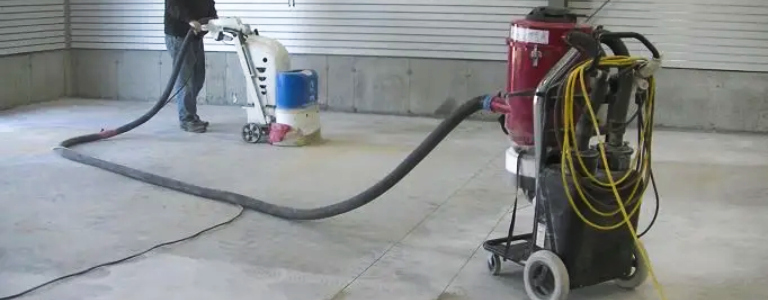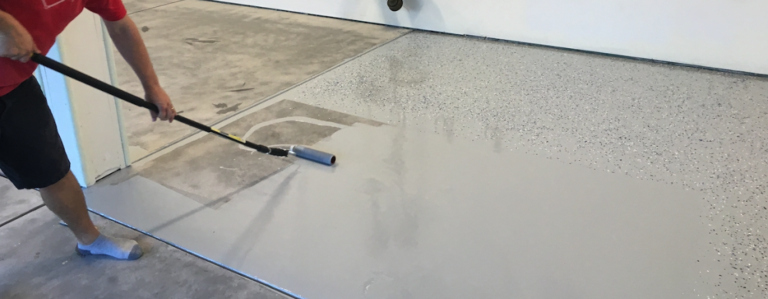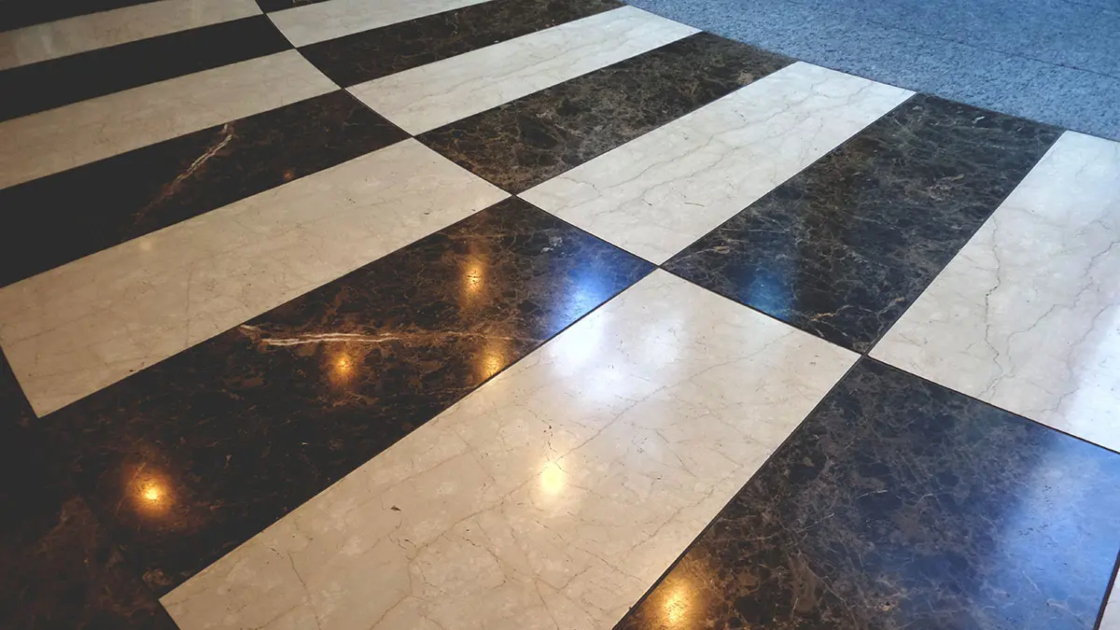How To Prepare A Floor Before Applying Epoxy?
Epoxy floor coatings have become the go-to choice for industrial or garage flooring. Generally considered superior to epoxy paint, homeowners everywhere are drawn to its durability and robust nature.
An epoxy garage floor is versatile in its design and aesthetic options, and the relative lack of maintenance is also a massive benefit for many. It is also relatively straightforward to apply epoxy flooring to an existing concrete surface, with the steps needed manageable for the average DIYer if they cannot afford professional installers.
Nevertheless, the concrete base must be primed and prepared for the installation, as skimping on this step can lead to significant issues down the road.
Here we look at the key steps you will need to take to ensure your concrete flooring is ready for any epoxy applications.
The cleaning process
It might seem strange that what will ultimately be covered by an epoxy coating needs to be thoroughly cleaned beforehand. Still, any sign of dust, debris, and other during an epoxy installation can cause issues later.
Fortunately, there are no great secrets to uncover at this stage. A careful sweep and vacuum are all that’s needed to ensure that as much dust and dirt is gone before moving on to the more involved processes.
The removal of grease and oil stains is critical, which can be done by using a degreaser and a stiff bristle brush. It is also essential to be free from residual evidence of previous coatings, as this can affect the binding process when applying new epoxy flooring. You can remove any prominent areas of the last coating with a scraper.
Mechanical preparation such as grinding or shot blasting may be required depending on the product or application type. Grinding is the preferred method to prepare a concrete floor.
Suppose there is a clear indication of a previous coating throughout your surface. It might be advisable to sand down the entire area at this stage until no apparent signs of an earlier coating remain. If the existing coating is sound, it can be scratched using sanding machines and if it’s flaking, it will have to be removed completely.
Once all this has been done, you should carry out a secondary wipe-down and vacuum to leave the area free of debris. As a final step, mainly if your space saw heavy vehicle use, it might be worth going over the surface with denatured alcohol to ensure that any lingering grease spots and scuff marks are gone completely.

Ensure your surface is completely dry
Before installing epoxy coating, you must ensure that moisture and vapour do not linger within the substrate as part of the floor preparation process. If you live in a naturally wet or snowy area or your concrete slab is older, this stage is vital, as it is often cited that excess moisture is the leading cause of coating failures on concrete.
There are a couple of observable signs that you should look out for at this stage. If there is evidence of discolouration or bubbling upon the surface of the concrete, excess moisture may be present. If there are signs of white residue on the surface, this could indicate salt left behind through evaporation, further indicating the presence of moisture.
If you are concerned that excess moisture could be present, consider carrying out a simple moisture test to determine the extent of the problem. Tape a sheet of plastic to the floor and leave it be for 24 hours.
If there is moisture under the plastic at the end of this time, your next step is to apply a sealer layer. This will block any deep-rooted moisture in the concrete from affecting the epoxy bonding process.
If it is clear that moisture is a bigger problem, you might need to consider some form of dehumidifying or moisture barrier coating to help take care of the problem. Make sure that you keep your floor dry throughout the floor prep process.

Additional prep techniques
As part of the floor preparation process, you may wish to choose from three further options that will help maximise the effectiveness of the bonding process and the strength of the epoxy coating.
1. Acid etching
Acid etching is the process of applying an acid-based solution to your concrete surface to widen the pores within the concrete. With wider pores in place, the epoxy coating will be more effective at binding with the concrete during the curing process, creating a much stronger and more durable layer.
The benefit of this technique is that it is easily accessible to most people. However, several acid-based products are at risk of emitting harmful fumes. All that is required is a solution and a stiff bristle broom to apply the solution evenly. Excess acid must also be disposed of promptly and efficiently to remove any subsequent dangers.
2. Diamond grinding
Diamond grinding involves removing the uppermost layer of your concrete slab in preparation for applying an epoxy coating. As the name suggests, the rotavating blades are tipped with diamond and are designed for grinding and smoothing your floor’s surface. This technique can be used to remove imperfections on your surface.
Although it will involve machinery that may need to be hired, the process is highly versatile and can fit individual needs. Most are height-adjustable and can take away as much or as little of the surface as required.
3. Shot blasting
Shot blasting involves the high-pressure contact of small pelts upon the concrete surface. It is designed to disrupt the topmost layer of the concrete to widen pores and create an uneven surface ideal for an epoxy coating to bind effectively with the concrete. It serves a similar purpose to acid etching.
The machine is designed to capture everything that’s left in its wake. A huge benefit to this technique is that there will be little residue left over. However, the method and machinery are more geared toward larger-scale projects and might not suit residential garages. It also requires a degree of professional skill to ensure maximum effectiveness.
The floor preparation phase is a deceptively in-depth process, and it is necessary to get it right. Once the epoxy coating installation has begun, it is challenging to go back and fix issues that might arise during the process that could otherwise have been dealt with earlier.
It’s important to take right steps with your prep, and you’re well on your way to a perfect epoxy flooring installation. Contact us today to find the ideal epoxy coating solution for you.



